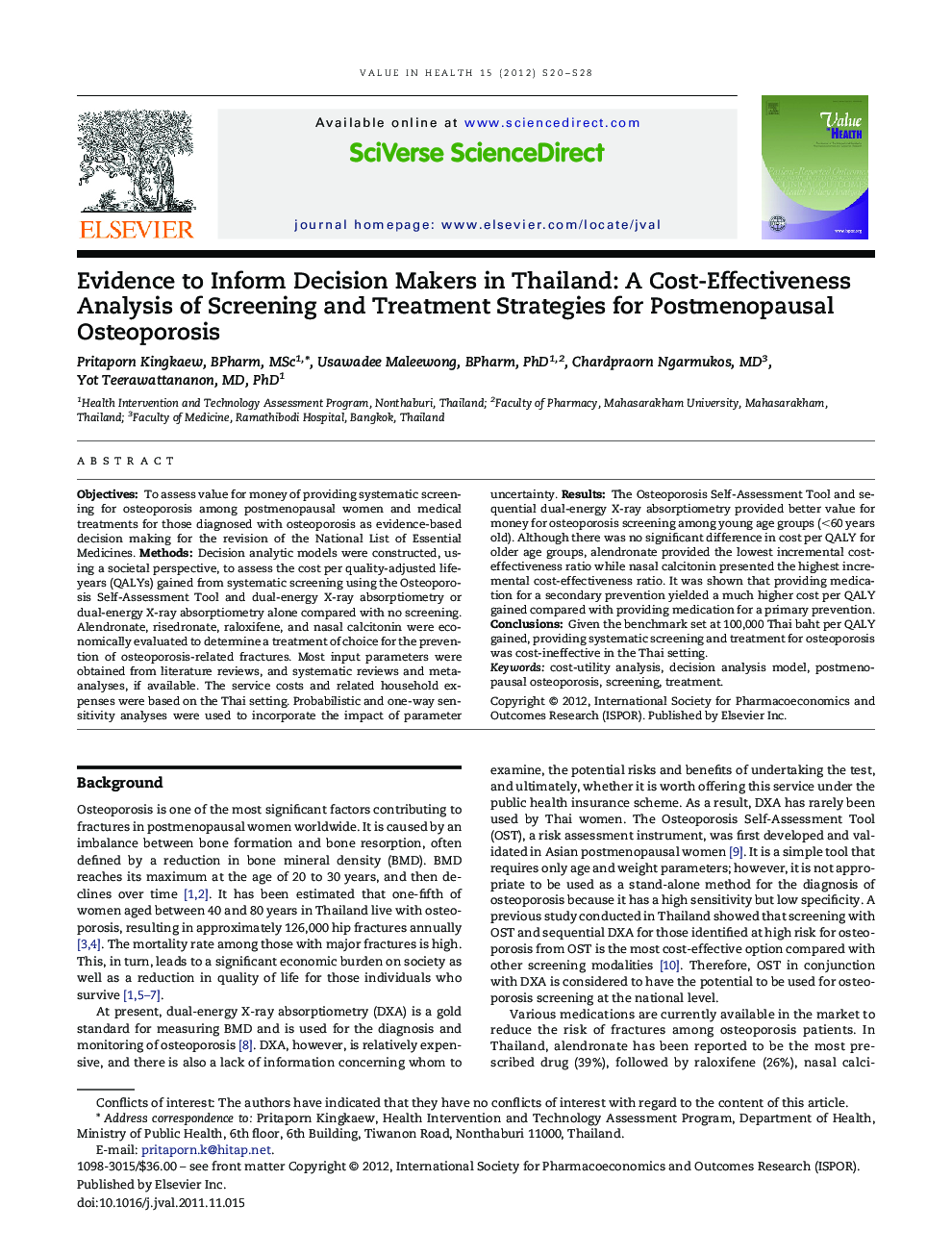| کد مقاله | کد نشریه | سال انتشار | مقاله انگلیسی | نسخه تمام متن |
|---|---|---|---|---|
| 987768 | 935170 | 2012 | 9 صفحه PDF | دانلود رایگان |
ObjectivesTo assess value for money of providing systematic screening for osteoporosis among postmenopausal women and medical treatments for those diagnosed with osteoporosis as evidence-based decision making for the revision of the National List of Essential Medicines.MethodsDecision analytic models were constructed, using a societal perspective, to assess the cost per quality-adjusted life-years (QALYs) gained from systematic screening using the Osteoporosis Self-Assessment Tool and dual-energy X-ray absorptiometry or dual-energy X-ray absorptiometry alone compared with no screening. Alendronate, risedronate, raloxifene, and nasal calcitonin were economically evaluated to determine a treatment of choice for the prevention of osteoporosis-related fractures. Most input parameters were obtained from literature reviews, and systematic reviews and meta-analyses, if available. The service costs and related household expenses were based on the Thai setting. Probabilistic and one-way sensitivity analyses were used to incorporate the impact of parameter uncertainty.ResultsThe Osteoporosis Self-Assessment Tool and sequential dual-energy X-ray absorptiometry provided better value for money for osteoporosis screening among young age groups (<60 years old). Although there was no significant difference in cost per QALY for older age groups, alendronate provided the lowest incremental cost-effectiveness ratio while nasal calcitonin presented the highest incremental cost-effectiveness ratio. It was shown that providing medication for a secondary prevention yielded a much higher cost per QALY gained compared with providing medication for a primary prevention.ConclusionsGiven the benchmark set at 100,000 Thai baht per QALY gained, providing systematic screening and treatment for osteoporosis was cost-ineffective in the Thai setting.
Journal: Value in Health - Volume 15, Issue 1, Supplement, January–February 2012, Pages S20–S28
